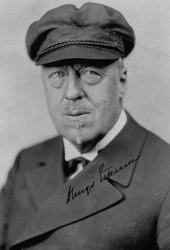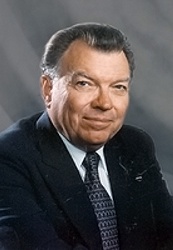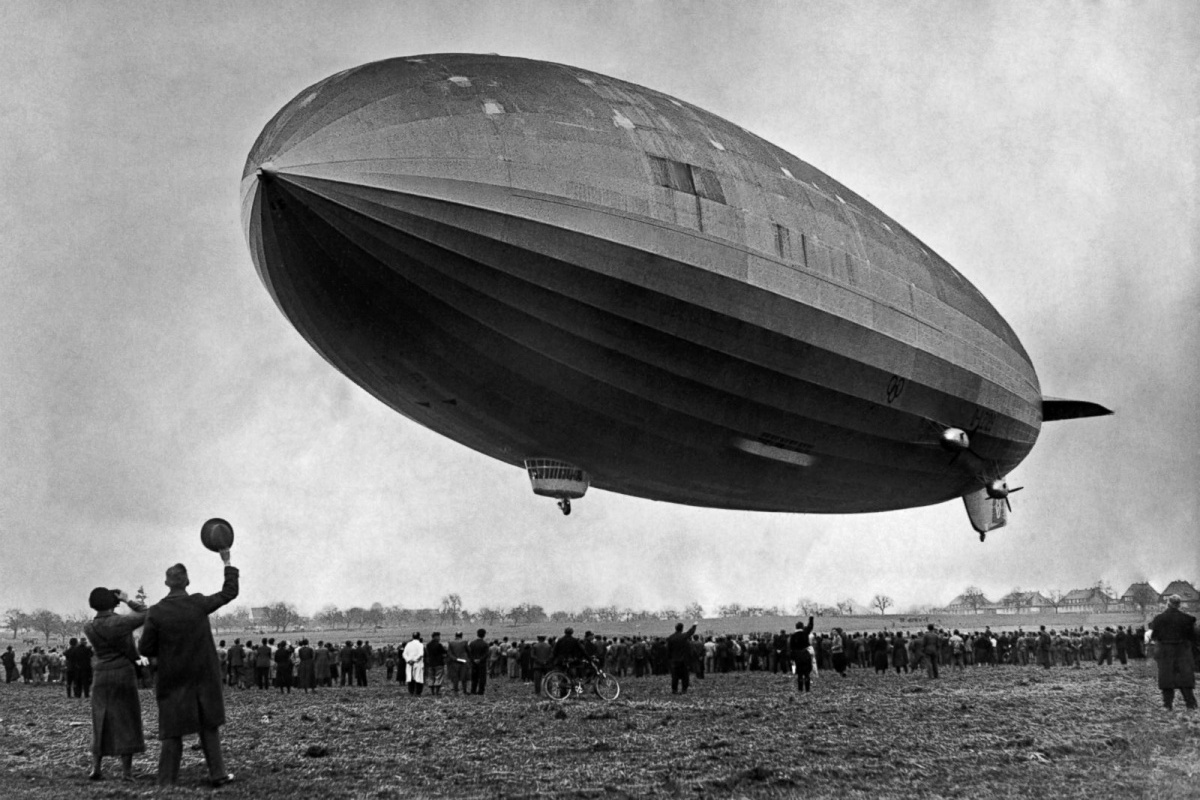Due to its tragic fate, the LZ 129 Hindenburg is still probably the most famous airship of solid construction of all time. The machine was named after the field marshal and later the second German president, Paul von Hindenburg, who was chosen in 1930 by the then director of Luftschiffbau Zeppelin GmbH, Dr. Hugo Eckener. This flagship of the German airline Deutsche Zeppelin Reederei (DZR) served only about 14 months from commissioning until the day of the plane crash. The catastrophic story of this aerostat is also described in two films, the American film Hindenburg from 1975 and the German version from 2011 called Hindenburg: The Last Flight.
Hindenburg was structurally based on the plans of the previous LZ 128 model, which the company decided to build after the success of the worldwide LZ 127 Graf Zeppelin bypass. One hundred and twenty-eight was to be about 237 m long, powered by ten Maybach engines housed in five tandem gondolas (the 1930 plan stated only four) and filled with hydrogen. This feature eventually became fatal to her, because after the disaster of the British airship R 101, the company decided to reconsider the use of this medium and its development was definitively terminated. The plans were thus used to develop a new and this time helium-filled airship LZ 129 Hindenburg. Although the production of components began in 1931, the construction itself was not started until a year later. This was mainly due to Zeppelin’s high demands on the powertrains, and in order to meet their requirements, Daimler-Benz decided to develop and subsequently improve a completely new in-line LOF.6 diesel engine (later referred to as the DB 602).
The skeleton of this machine was then made of duralumin and consisted of 15 main annular partitions, which were interconnected by longitudinal beams located around their perimeter. 5 tons of alloy salvaged from the British R 101 debris were also used in the construction of the components. 16 independent cotton gas bags were also placed inside the structure, and a new technology of applying several layers of gelatin latex was used in their production for better gas tightness. The ship’s outer cotton liner was impregnated with a mixture of iron oxide and cellulose acetate for impermeability and finally coated with aluminum dust to prevent the casing from overheating. The entire aerostat was then powered by four Mercedes Benz DB 602 engines.
 The Hindenburg could carry up to 72 passengers, 61 crew members and cargo, while small cars were transported in the rear of the cargo area (at the stern). Thus, it was a total of 112 tons of payload of the machine. To improve aerodynamics, all passenger spaces were located inside the machine, not in conventional suspended gondolas. The exceptionally luxurious and spacious interior was designed by the famous German architect Fritz August Breuhaus, who previously also worked for the American Pullman Car Company.
The Hindenburg could carry up to 72 passengers, 61 crew members and cargo, while small cars were transported in the rear of the cargo area (at the stern). Thus, it was a total of 112 tons of payload of the machine. To improve aerodynamics, all passenger spaces were located inside the machine, not in conventional suspended gondolas. The exceptionally luxurious and spacious interior was designed by the famous German architect Fritz August Breuhaus, who previously also worked for the American Pullman Car Company.
In the middle of the upper deck, small cabins were prepared for passengers, lined with large common rooms (dining room, lounge and writing room on the starboard side) with a promenade. Paintings with various scenes of the LZ 127 Graf Zeppelin airship to South America hung in the dining room, and a stylized map of the world covered the lounge wall. As passengers were expected to spend most of their time in public spaces, large sloping windows were placed along the entire length of both decks. In the lower deck, there were hot and cold showers, a crew dining room and even a smoking lounge.
The first test flight of the machine, which did not even have its name painted on its fuselage at that time, took place on March 4, 1936. The flight was attended by the head of the company, Dr. Hugo Eckener, Lt. Col. Joachim Breithaupt, American mechanical engineer Harold G. Dick, eight corporate airline captains, 30 shipyard  employees and 47 other crew members. The first commercial and mail flight took place on March 23 of the same year. The ship sailed from Friedrichshafen to Löwenthal across Lake Constance and carried 80 reporters. Three months later, Hindenburg made a record transatlantic flight lasting just 5 days, 19 hours and 51 minutes.
employees and 47 other crew members. The first commercial and mail flight took place on March 23 of the same year. The ship sailed from Friedrichshafen to Löwenthal across Lake Constance and carried 80 reporters. Three months later, Hindenburg made a record transatlantic flight lasting just 5 days, 19 hours and 51 minutes.
At the turn of 1936 to 37, several changes took place in the construction of the ship. Thanks to the increased capacity of the lift, it was possible to add another ten passenger cabins. Nine of them were equipped with two beds, the last even four. Thanks to these improvements, the total capacity of passengers has risen to 72. Gutters have also been installed on the outer shell of the airship to drain rainwater into ballast tanks to compensate for the weight of the airship.
Hydrogen instead of helium
It was originally intended to use less flammable helium for this aerostat, which was considered the safest lifting gas at the time. Unfortunately, it was also quite rare and extremely expensive at the time, as it could only be purchased in industrial quantities from distillation plants in some oil fields in the United States. Due to the fact that the Americans had a monopoly on it and refused to sell it to Germany as a potential enemy (a military embargo was imposed on this raw material as early as 1927). Eckener forced to choose cheap hydrogen. One of the few advantages of this gas was about 10% higher lift compared to helium, and therefore it was possible to add additional cabins for passengers. As the Germans had considerable experience with the construction and operation of hydrogen-filled airships, various safety features were installed inside to prevent a fire in the event of a gas leak.
Destruction in Lakehurst
Hindenburg took off for his last flight on May 3, 1937 from Frankfurt Airport. It was to be the first of eighteen planned transatlantic flights. During the flight over the ocean, the ship gained a delay due to the headwind, which later multiplied due to the storm over New Jersey. Due to this bad weather, the airship had to fly around the city twice and therefore arrived at Lakehurst Airport until the evening of May 6, a full twelve hours later than originally planned. The landing maneuver began at seven o’clock, with ground personnel beginning to arrive at the ship exactly one to twenty minutes later.
The fateful moment came just four minutes later. The aerostat was only about 60 meters high when a terrible fire broke out in the back. He then absorbed it in a very short time (only 34 seconds). At that time, there were a total of 36 passengers and 61 crew members on board. Of this number, more than a third of passengers (13) and airship staff (22) lost their lives, including one ground staff. The unusual publicity of this disaster was also greatly aided by the unusually high participation of reporters. Paradoxically, thanks to this, there is a considerable number of photographs, a film recording and also the most famous radio recording in the history of radio commented by Herbert Oglevee Morrison.
Causes
Despite the large number of different more or less true theories, the three versions are the most recognized by the professional and lay public. These include sabotage, electric charge along with flammable paint and human error, the details of which can be found below.
Sabotage
The first and at the same time probably the least probable is sabotage, both from the potential enemies of Nazi Germany and from the core of the NSDAP itself. Given that these machines were then considered a symbol of Nazi Germany’s power, an attack by their opponents would most likely result in a weakening of the power and influence of this far-right party. The fact that this would probably happen is also evidenced by the fact that the Nazis saw the disaster as an insult to German technology. Therefore, only a brief informative article with a list of survivors was published in the newspapers, and the screening of the existing film was banned in Germany until the end of the war. Representatives of Zeppelin themselves, especially its former chairman Hugo Eckener, have been promoting this thesis since the beginning of the investigation. It was also recorded that, according to records, the fire occurred in the middle of the rear of the airship, away from the mooring ropes. Opinions also arose that the sabotage was ordered by Adolf Hitler himself in retaliation for the anti-Nazi statements of Dr. Eckenera. However, during the investigation, no factual evidence was found to prove any version of the attack.
Static electricity and flammable paint
The theory that is probably closest to the truth today is considered to be a thesis in which one of the main causes is identified by the spark generated by the accumulated static electricity. This would probably be helped by the fact that the airship was not designed so that the electric charge generated on it could be harmlessly discharged. The problem was mainly in the wet mooring ropes. Although they were made of ramie so that they were non-conductive, this changed fundamentally on a fateful day after passing through the already mentioned storm front. As the ropes rubbed against the surface, an undischarged electric charge was to build up on it, and as soon as the ropes touched the ground, the entire aluminum frame grounded. This view was also confirmed by the testimonies of the witnesses of the time, who later testified that a firefight similar to St. Elijah’s fire could be seen around the airship before the fire.
 It has long been assumed that static electricity ignited hydrogen in one of the gas bags, which eventually caused a very rapid domino effect of the other compartments and the airship exploded. In the 1990s, however, former NASA hydrogen program leader Addison Baine claimed that the machine did not explode, but burned with a very rapid chemical fire after being ignited by static electricity. According to him, the assumption is confirmed by photographs and a film recording of the disaster, which shows a huge mass of fire, while hydrogen burns with a colorless flame.
It has long been assumed that static electricity ignited hydrogen in one of the gas bags, which eventually caused a very rapid domino effect of the other compartments and the airship exploded. In the 1990s, however, former NASA hydrogen program leader Addison Baine claimed that the machine did not explode, but burned with a very rapid chemical fire after being ignited by static electricity. According to him, the assumption is confirmed by photographs and a film recording of the disaster, which shows a huge mass of fire, while hydrogen burns with a colorless flame.
In order to verify his assumption, he went to the German Zeppelin Museum in Friedrichshafen. While browsing the drawings of Hindenburg in the local archives, he also came across the drawings of the sister ship LZ 130 Graf Zeppelin II, where he was fascinated by the different composition of the top coat. He also managed to get the right pieces of Hindenburg’s mantle for a more detailed examination. Analysis of the infrared spectrograph and electron microscope showed that the top coat of the coating consisted only of a nitrocellulose compound on which aluminum powder was applied. The cotton fabric impregnated with iron oxide in combination with the burning paint mixture formed, in addition to the flame itself, small termite balls with a temperature of 2700 ° C, which probably burned not only the mantle but also the gas bags and thus completed the destruction.
Human factor failure
The latest described version, which is supported by, for example, the leading American expert in air disaster investigation Greg Feith, points to the unusually sharp turnaround of Hindenburg. The instructions, which the crew was carefully acquainted with, required the ship to avoid such sharp changes in direction due to the excessive load of its relatively fragile structure in the rear. It is therefore assumed that one of the carcass reinforcements ruptured during rotation, which ruptured one of the stern compartments during the return stroke, thus causing a critical hydrogen leak. The gas was subsequently ignited by skipping the static discharge, in the same way as described in the previous theory.
This would be proved not only by many eyewitness accounts or a film recording, but mainly by problems with the balancing of the aerostat during the last phase of the landing maneuver. The unexpected heaviness of the stern forced the crew not only to release all the ballast tanks at the stern, but even to move the crew members from stern to bow to manage to compensate for the ship’s disturbed balance.
The end of the Zeppelins and LZ 130
The airship accidents occurred long before Hindenburg burned down, but none of the more serious ones involved Zeppelin machines. These ships have long managed to keep a record in air safety. Proof of this was, for example, the very successful LZ 127 Graf Zeppelin, which carried 12,000 passengers during its service and flew more than 1.6 million kilometers. The company was rightly proud of this fact, and always emphasized that its airships had never injured a single passenger. However, the tragedy completely changed everything and the last nail in the coffin of this type of air transport was planted by the media that were at the scene of the accident. They managed to completely destroy the public’s confidence in these luxury flying giants, which meant for the company basically the complete end of its activities. In addition, the operation of the company reflected the growing influence of the Nazis and World War II was on the decline.
Although the company managed to build another ship of this class, designated LZ 130 Graf Zeppelin II, about a year after the disaster, it never carried any civilians on board. The machine was intended only for propaganda and espionage flights, which in the end made only a total of 30. With the outbreak of World War II, the last hopes for the resurrection of society faded completely. The material was needed to build military aircraft, so Hermann Göring was ordered in 1940 to destroy all the remaining Zeppelins.
Photogallery:
LZ 129 Hindenburg
| Manufacturer | Luftschiffbau Zeppelin GmbH |
| Crew | 40-61 persons |
| Capacity | 50-72 passengers |
| Airplane type | Aerostat (type airship) |
| Engine | 4 x Daimler-Benz DB 602 |
| Engine power | 4 x 890 kW |
| Speed | maximum 135 km/h |
| Length | 245 m |
| Extent | 200 000 m³ |
| Diameter | 41,20 m |
source:
https://cs.wikipedia.org/wiki/LZ_129_Hindenburg
https://en.wikipedia.org/wiki/LZ_129_Hindenburg
https://en.wikipedia.org/wiki/LZ_130_Graf_Zeppelin_II
Het luxe genaamd Hindenburg [Luxus jménem Hindenburg] [film]Nizozemsko/USA, 1999. 54 min.





















